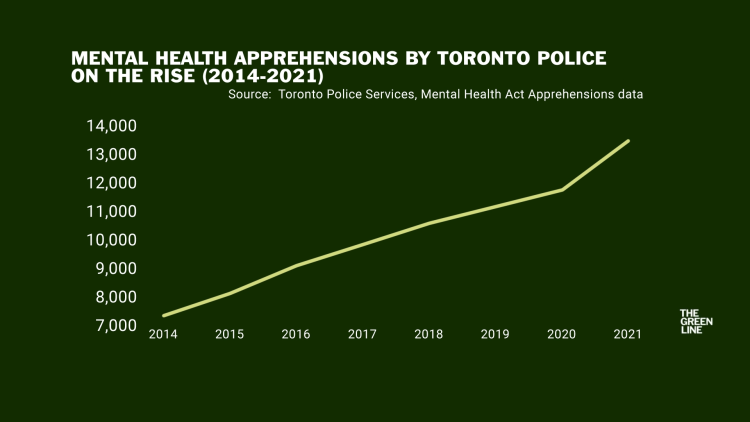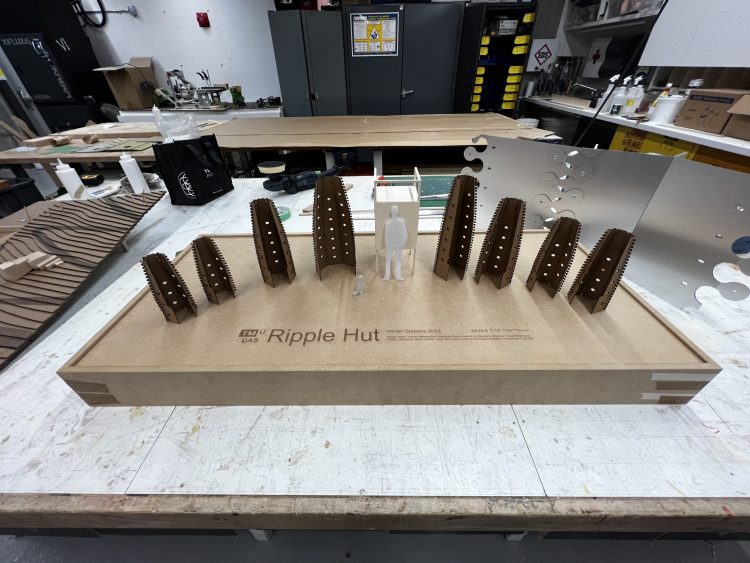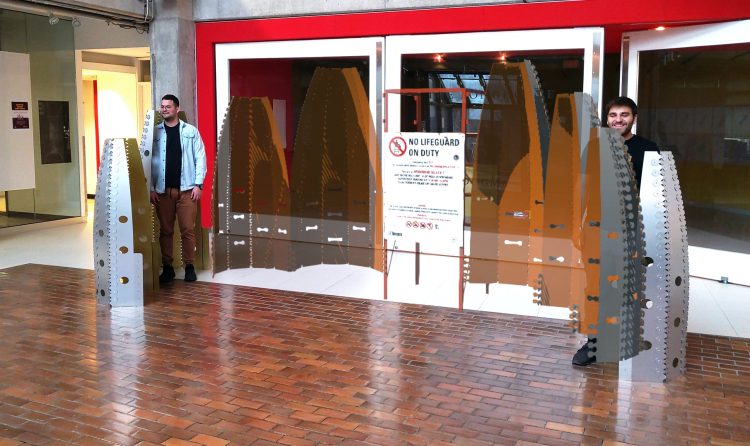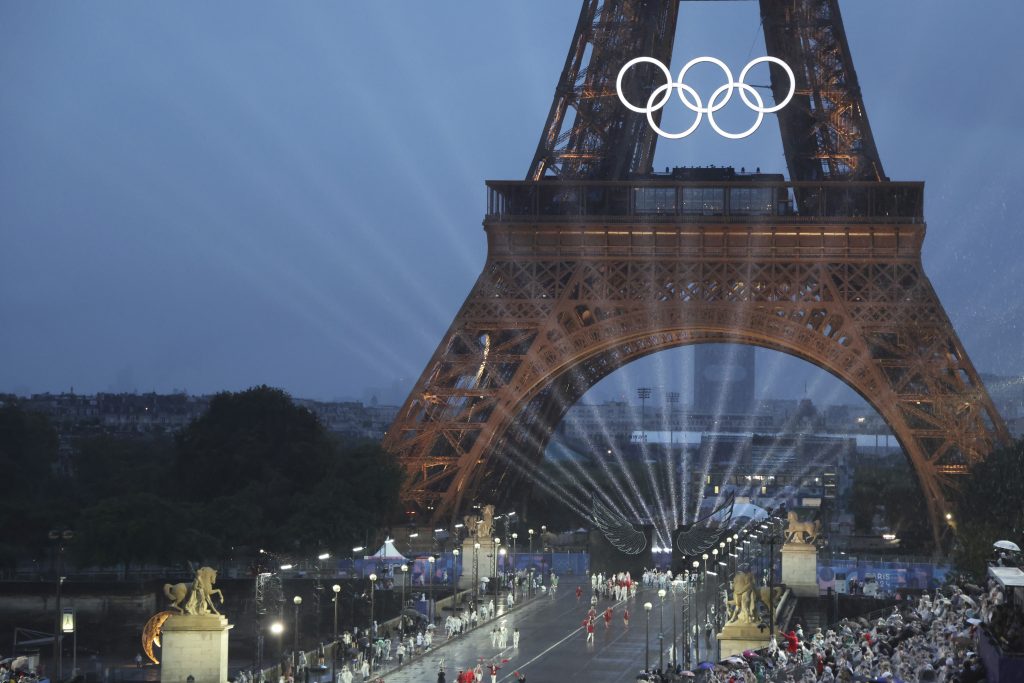Annual art installation to highlight ‘Radiance,’ combats winter blues in The Beaches
Posted February 17, 2023 12:32 pm.
Last Updated March 22, 2023 9:33 am.
A wave of new public art hits Woodbine Beach this weekend, drawing Torontonians out of hibernation and onto the city’s sandy lakefront, which tends to find reduced use during winter months.
The initiative boosts community mental health and combats winter blues, while providing opportunities for undergraduate architecture students to showcase their work.
Officially launching on Monday, Feb. 20, this year’s Winter Stations transform eight lifeguard stations into everything from a vibrantly coloured lighthouse to “LIFE LINE,” a large tube that engages participants through tactile and auditory elements.
Other projects include a pavilion and CONRAD, a monument to the fallen Toronto raccoon of 2015.
“To sort of activate this public space is something really unique,” said Paul Bieksa, executive director of The Beach BIA. “This will definitely generate a lot of foot traffic from the community and beyond.”
View this post on Instagram
Research has also shown that public art can also measurably improve public health outcomes. In 2015, Yale University’s School of Medicine studied Mural Arts’ Porch Light Program in Philadelphia and found that the initiative to create public murals enhanced behavioral health at the community level.
“Free public art has a really important role in this city,” said Dakota Wares-Tani, lead organizer for Winter Stations. “I think about the various sculptures that I pass through in the city and that visual stimuli, and I like that break of the kind of hard urban landscape.”
“It’s not just your typical playground that you find [in the] summer. These are art pieces, but also people engage [with] them,” said Vincent Hui, associate professor at the Department of Architectural Science at Toronto Metropolitan University.
In Toronto, mental health has continued to plummet since the onset of the COVID-19 pandemic. Data from Toronto Police Services shows that the number of arrests under Ontario’s Mental Health Act has nearly doubled since 2014, from about 7,393 in 2014 to 13,375 in 2021.

Toronto Police Services have nearly doubled the number of arrests under the mental health act from 2014 to 2021. (The Green Line)
Wares-Tani hopes this year’s art installations will bring people a much-needed break. She says this year’s theme, Radiance, is a way to pivot away from the pandemic-centred narrative of the last two years.
“This year we want to celebrate and just kind of inject fun into the beach, to break away from the kind of narrative that we’re strong and how has the pandemic changed us,” said Wares-Tani. “But to really just celebrate [how] we are trying to move on and everyone has really held it together over the last two years.”
Wares-Tani added the project has been growing in popularity since it first began nine years ago.
“Every year we receive more applicants from around the world and locally, and these had a really large impact on bringing different kinds of visions, depending on the theme, to the beach.”
While most of the designs are winners of an international competition, architecture students from Ontario universities are invited to participate as well, providing them with a rare opportunity to put their education in action and see their work displayed alongside world-class artists.

A model of Ripple Hut by architecture students at Toronto Metropolitan University, scaled to one-tenth of the final size. (Aloysius Wong/The Green Line)
Jake Kroft, a third-year architecture student at Toronto Metropolitan University and one of the leads on his school’s Winter Stations project, outlined the inspiration for their design.
“We wanted to use the form of the canoe as a response to the need for shelter on the cold beach in the winter,” explained Kroft. “And there’s a tie to the water with the canoe and also the cultural aspects that happened with the canoe throughout the years with its need for transportation.”
The student team gave The Green Line a behind-the-scenes tour where they walked through how they developed and built their design. The process includes creating a miniature model before cutting and connecting the pieces at full scale. Augmented reality glasses also allow them to fine-tune their design before finalizing it and bringing the completed project to the beach.

Jake Kroft (right) and Cesar Rodriguez (left), as seen beside an augmented reality feed of their Ripple Hut design. (Department of Architectural Science, Toronto Metropolitan University)
“It’s an amazing opportunity. Since I came to Canada, I’ve been visiting Winter Stations. Finally being able to design one — it’s like a dream come true,” said Cesar Rodriguez, another third-year architecture student and team lead.
“I love watching the student teams coming together because I myself once was a student. I actually participated in Winter Stations back in the day,” said Wares-Tani.
Hui, who supervises and mentors the Toronto Metropolitan University student team, tells The Green Line that these kinds of opportunities allow his students to not only contribute to their community, but also develop valuable experience for their careers.
“I think the most rewarding part of my job is seeing the students’ satisfaction,” said Hui. “For my students, undertaking architecture is not just simply a matter of creating interesting imagery or doing proper drawings. It’s actually taking those ideas and actually making them manifest in some sort of built reality.”
The Winter Stations exhibition officially begins on Feb. 20 at Woodbine Beach and runs until April 3.








